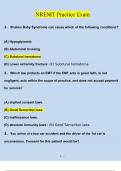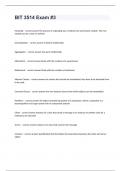Summary
Summary Biological Psychology, everything you need to know.
- Course
- Institution
- Book
This is a summary of all the things you need to know. No excessive amounts of information. Just the things you need to know explained and made simple. Every topic is discussed. Got an 8.2
[Show more]













